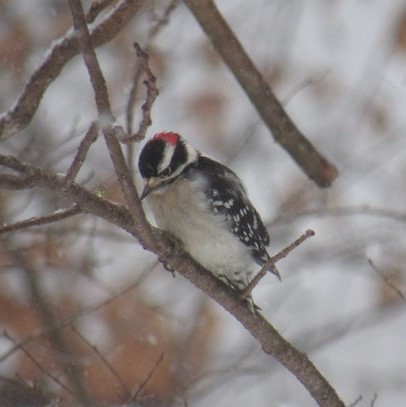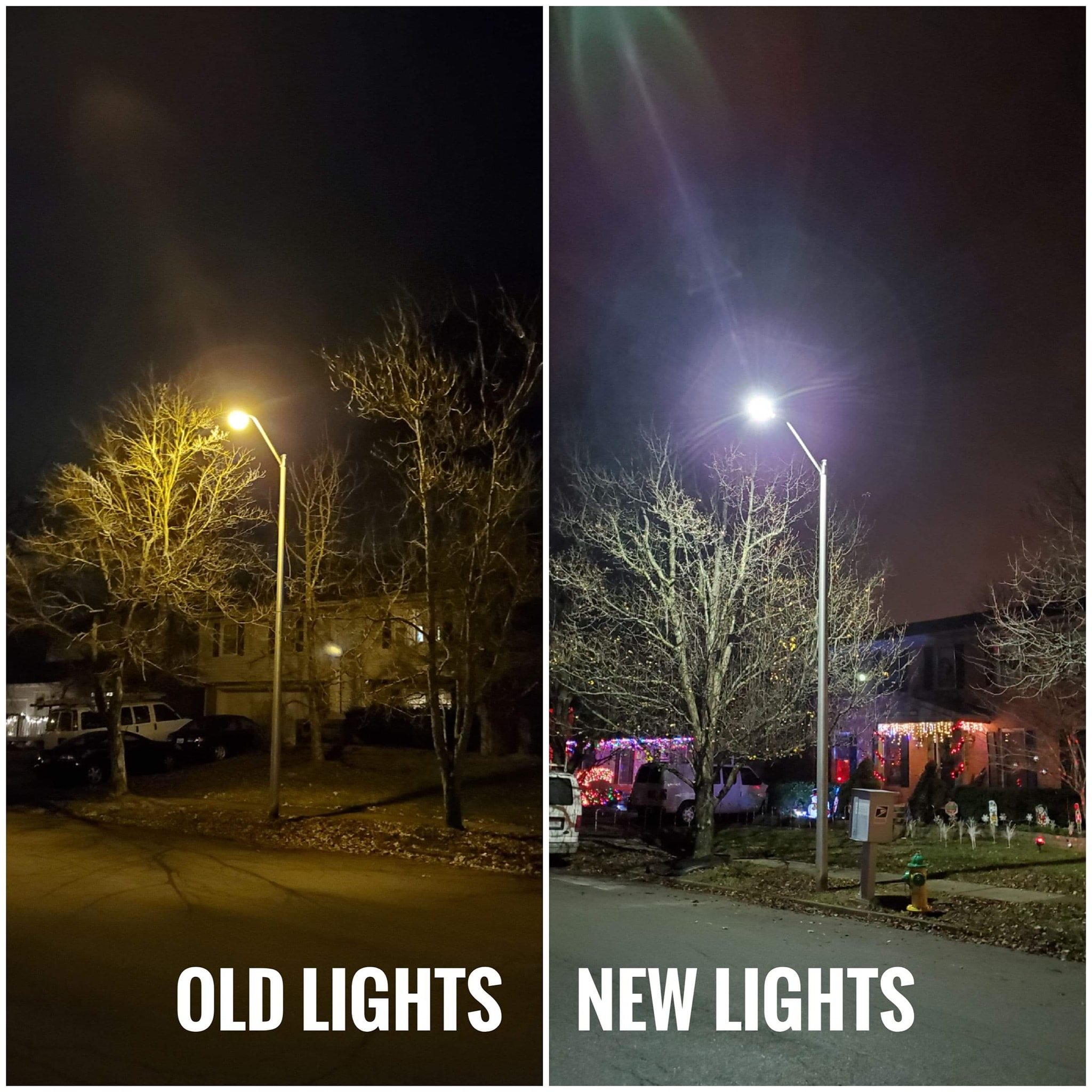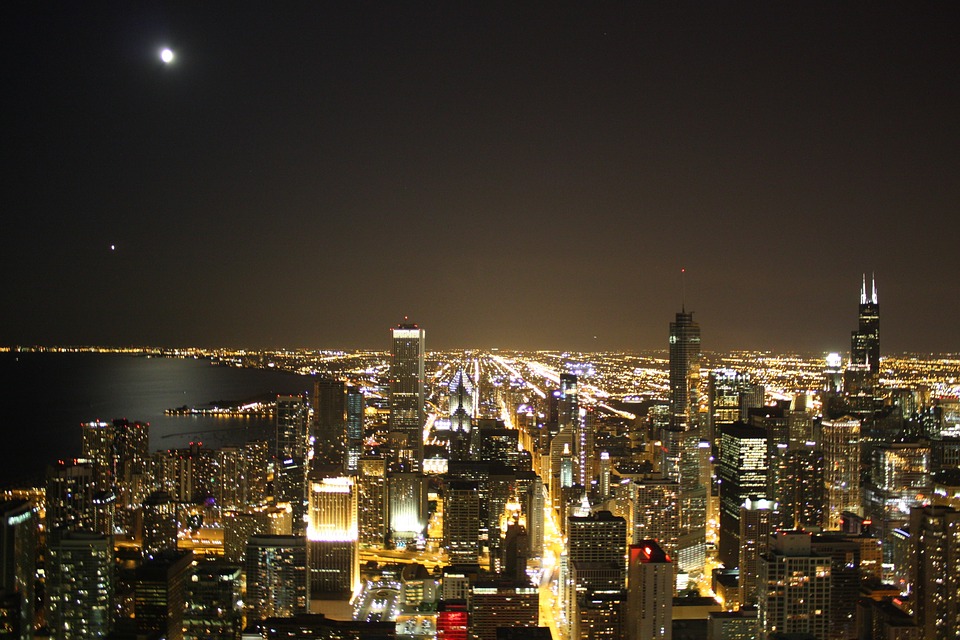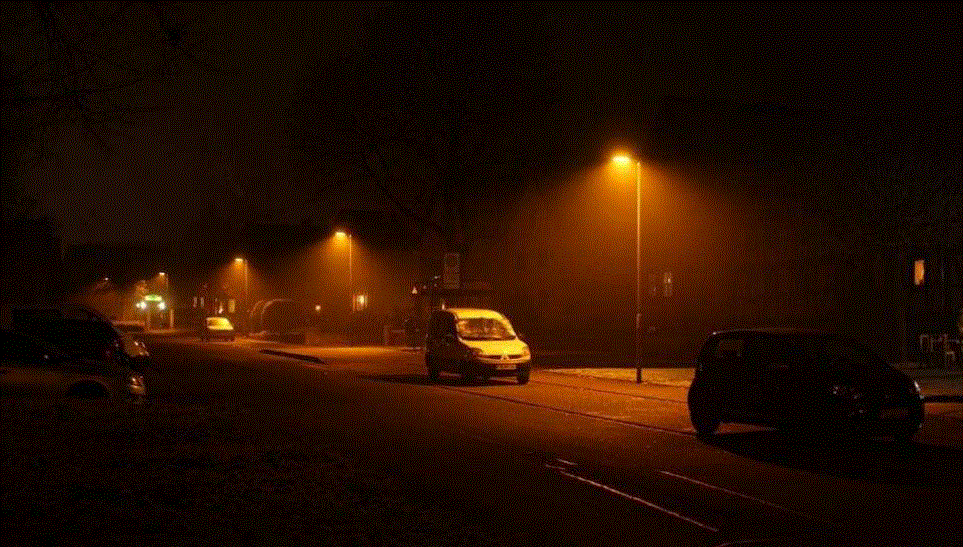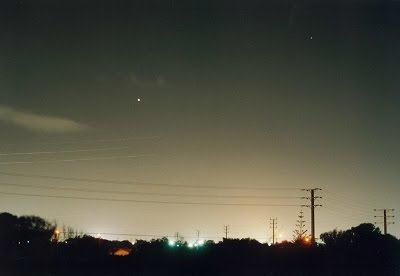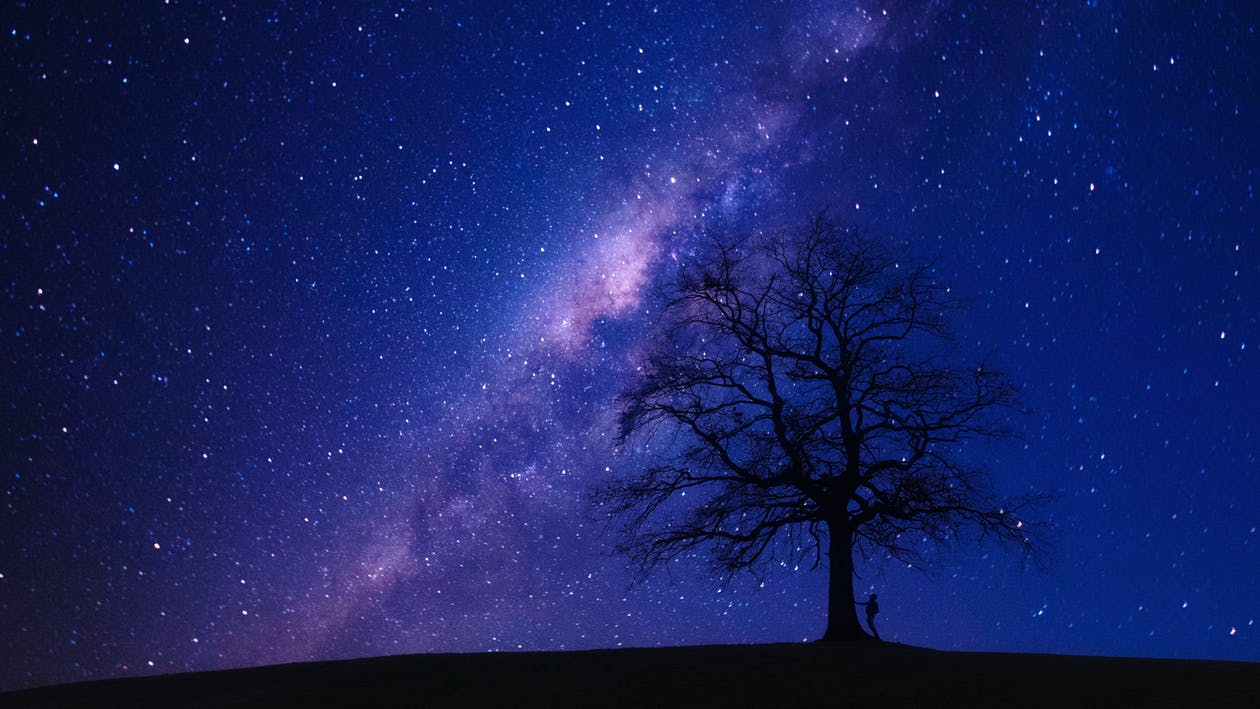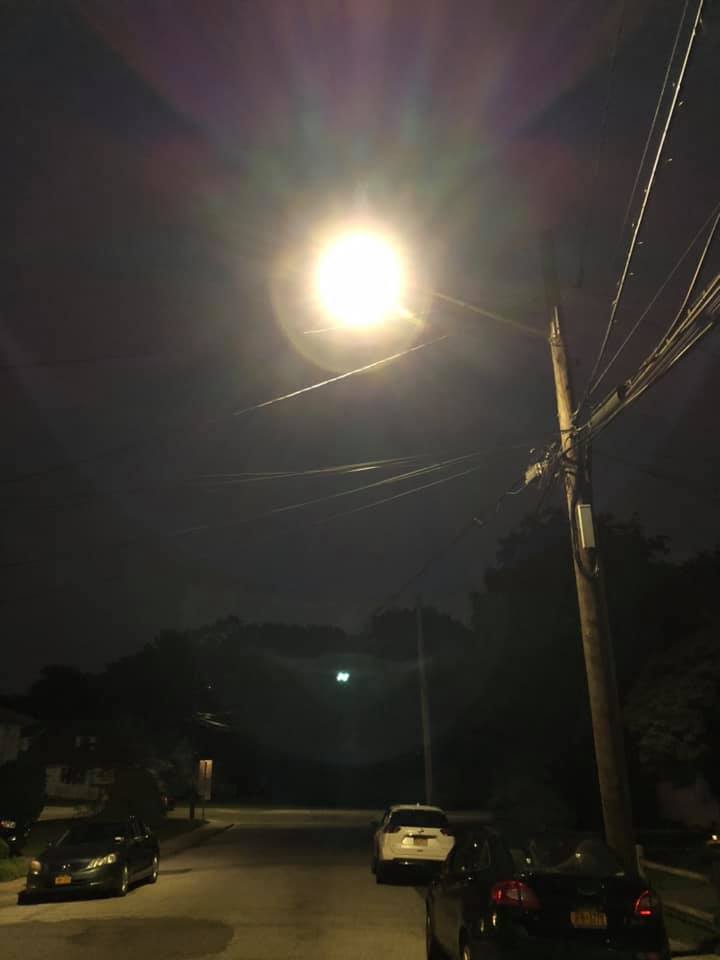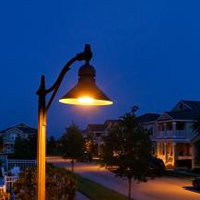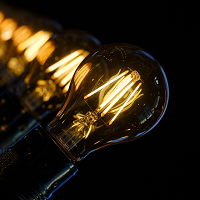Cities and utilities are steadily changing our streetlights and other lighting to LEDs, but the kinds they have been installing are not the best choice for wildlife, our health and the nighttime environment.
‘Eco-friendly’ lights found to be worse than sodium ones
https://www.theguardian.com/environment/2021/aug/25/led-streetlights-moth-england-eco-friendly-sodium-insect-decline
Birds Sleep Outdoors (and Can't Cover Windows)
Please Demand Wildlife Friendly LED Streetlights Having a Deep Amber Tone Below 3000K
| Tweet |
The energy saving benefits of LED lighting is often offset by many other negative environmental and human health factors that arise from improperly using LEDs as street or other nighttime lighting. The new LED streetlights being installed throughout cities, neighborhoods and rural areas appear brighter, whiter, have a much higher color temperature and stark, intense point-source nature, and emit significantly more blue light than the amber high pressure sodium streetlights being replaced, making the new streetlights more glaring and disruptive to wildlife, proper sleep and to human health at night in ways that are increasingly well understood.
photo by Michael LaTour
Alternative LED streetlights having a night-friendly, warm, deep amber appearance below 3000K closer to the likeness of the old 2000K high pressure sodium streetlights being replaced, are what cities, neighborhoods and utilities should instead be installing to preserve sleep, our health and wildlife and to maintain a proper nighttime ambiance.
The new LED streetlights now being installed throughout our neighborhoods, with their brighter appearance, higher color temperature and whiter color containing more blue light, more closely mimic real daylight. Such lighting confuses wildlife and the nighttime ecology in our environment as well as our own biology into basically responding as though it’s daytime when in actuality it is night, producing cascading harmful effects on our health and disrupting the natural world in ways that are increasingly well documented by more strongly (than traditional lights) conflicting with the natural cycle of light and dark that has persisted throughout our planet’s history, which practically all life on Earth depends on. Such lighting also appears brighter, having a disruptive effect on wildlife from their normal rest behavior, nesting, migration or other normal activity at night, while appearing uncomfortable and less conducive to proper sleep to humans.
A large and growing body of research shows that artificial light at night (ALAN), especially from brighter, whiter, blue-rich sources, such as the new higher Kelvin streetlights, strongly suppresses melatonin, an important hormone necessary for proper sleep and healthy immune and metabolic function, increasing our health risk for a wide range of diseases, including obesity, diabetes, cancer, sleep disorders, degenerative eye diseases, eye damage, depression (and other mental health disorders) and infections, while harming wildlife and our ecosystem in similar and other ways (please see below and included sources).
About Lighting Pollution | FWC (Florida Fish and Wildlife Conservation Commission)
https://myfwc.com/conservation/you-conserve/lighting/pollution/
About Lighting Pollution | FWC (Florida Fish and Wildlife Conservation Commission)
https://myfwc.com/conservation/you-conserve/lighting/pollution/
The adverse affects of the new poorly chosen, white LED streetlights on wildlife are far reaching. For example, they are clearly more harmful to many birds, including our beloved songbirds and humming birds. The brighter, whiter appearance of the new LED streetlights and the increased blue light which they emit cause birds to be restless during the night and to get up way earlier than when they are actually supposed to. This can easily be heard by the out of place bird sounds one can often hear way too late or too early in the morning when its still thoroughly nighttime, especially around large placements of these lights, such as in neighborhoods or near cities. The new wildlife inconsiderate streetlights also cause birds to be more vulnerable to predators and to nest seasonally out of sync with when they are supposed to, instead confusing them into thinking that the day is long enough when food would be plentiful to feed their young when in actuality it is not.
Each year billions of migratory birds, which includes many of our backyard friends, become blinded or disoriented by pervasive and brighter street and other artificial lighting at night when they try to make their journeys across the continent, making them less likely to safely return to us the next year. Many become confused and thrown off course by the lights and die from exhaustion or crashing into buildings. The new lights overpower the faint natural light of the moon and stars which migratory birds have always needed for night navigation, obscuring them from view while also attracting birds to the artificial light sources. This problem is now being made much worse by the recent widescale switch to brighter whiter choices of LED streetlights and residential, business and security lighting, often with lack of adequate downward shielding to properly control this new more intense form of light over the night friendlier amber glow of the high pressure sodium lights they are steadily replacing, resulting in countless bird deaths each year, harming wildlife populations and further threatening endangered species throughout the natural world, while also harming their main source of food - the insect world which especially birds and many other wildlife and even human agriculture depends on for survival.
A birds eye view of the confusing maze of human artificial lighting at night over Chicago. The vast majority of the many birds which migrate do so at night and are adapted to see a dark landscape under a star-filled sky which they have always used for navigation, now being completely upset in many areas by pervasive, whiter and brighter artificial lighting. Note the increase in white LEDs over the softer amber lights being replaced, the resulting hazy sky glow which washes out almost all the stars from view which birds need to navigate and the daunting maze of artificial lights stretching beyond the horizon, killing countless birds each year.
Another example of the harm the new whiter streetlights do to our environment, which directly harms birds and other wildlife is the loss of insects. The importance of insects as the main drivers of ecosystems and food chains cannot be ignored, especially since the natural world is already declining at an alarming rate, including important insects. Anyone can easily observe at night, especially during the height of the summer in neighborhoods and in rural and natural areas where there tends to be more insects, a marked increase in both size range and number of insects swarming around the new, whiter LED lights and exhausted and dead insects on the ground underneath as compared to the old high pressure sodium, amber lights the LEDs replace - harming this very important, basic and already declining worldwide and increasingly endangered component of the ecosystem, source of pollination of plants and agriculture, and basic food source for many wildlife, with adverse effects that ripple through the web of life, disrupting food chains, including our own. Insects are particularly well adapted to see daylight and so are more attracted to the new higher Kelvin LED streetlights because they emit more blue light and appear whiter more like real daylight, making the new higher Kelvin streetlights more disruptive to the fundamental and already stressed insect world and the ecosystem at night, and more harmful to our night environment.
Insects are strongly attracted to the new white lights, far worse than the amber light on the right, harming the important balance of the insect world. This is just one example. Please see included sources further down below for many more.
(1) Grasshopper plague in Las Vegas - Fantastic comparison of the attraction of grasshoppers to white LEDs vs. warmer lights. | Youtube.com
a) https://www.youtube.com/watch?v=YxJ-AssIELs
b) https://www.youtube.com/watch?v=YxJ-AssIELs&fbclid=IwAR0q2WMC4DuO9YLESglklhEdnRmF61abc1ant2_PKfUKpfwZXCem3eMd6mM
(2) When the sun sets in Las Vegas, grasshoppers swarm the city's bright lights | WHAM
https://13wham.com/news/offbeat/when-the-sun-sets-in-las-vegas-grasshoppers-swarm-the-citys-bright-lights?fbclid=IwAR0ucBcKGsU2L3RBBeCqkoAPTkpYzGq0rCwq6FxCfMp8i2aq0qxIi15mYng
(3) Light Pollution Linked to Nearly 50% Decline in Insect Populations
https://www.ecowatch.com/light-pollution-insect-populations-2654803005.html
(4) The world's insect populations are plummeting everywhere we look | Natural History Museum
https://www.nhm.ac.uk/discover/news/2019/february/the-world-s-insect-populations-are-plummeting-everywhere-we-look.html
"All indications suggest that insect populations are in decline worldwide, including over 50% of all butterflies. The number of insects is falling at such a perilous rate that if nothing is done to halt the decline, our own future could be at risk."
(5) Light Pollution and Insects: Insect Attraction to Various Types of Residential Lights | AAAS - The World's Largest General Scientific Society
https://www.aaas.org/abstract/light-pollution-and-insects-insect-attraction-various-types-residential-lights
(6) Extinction: The Facts (Extinction Crisis)
https://www.dailymotion.com/video/x80idem
"One million species out of eight million species on earth are now threatened with extinction, 500,000 plants and animals and 500,000 insects (number of species threatened)."
Though city officials often claim that the new LED streetlights they are pushing are more directional, the need for adequate shielding is obvious. The new streetlights emit a large amount of their now harsher, more glaring, higher Kelvin, blue-rich light at high angles directly into motorists' eyes and extending far beyond the street well into private property, as is evident by the direct viewability of the actual bright emitting light sources inside the streetlight fixtures even at relatively large distances from the streetlights in a person's normal field of view looking along the road and from vantage points in yards and private property well beyond the easement, creating worse light trespass, glare and light pollution in the environment, in homes and in wetlands and other natural environments near roads, while reducing road safety.
The new LED streetlights are poorly shielded causing them to be directly visible within a person's normal (horizontal) field of view, creating harsh glare that can even damage eyesight and worse light trespass, especially since they are much higher Kelvin than the old lights - video by Gabriel A. Dozier
The glaring LED diodes and stark upsetting light from the new streetlights and resulting casted illumination, increase health risks from worse ALAN exposure, increase disruptive effects to wildlife in the surrounding environments, reduce road safety, rob us of a proper, more natural nighttime setting and prevent residents from being able to choose how and whether to light their property as they see fit (without streetlights or another’s lighting interfering), and waste a large portion of the light emitted as light trespass were it is not needed, is obtrusive, disruptive, harmful or unwanted, resulting in associated light pollution, energy demands, energy bills, wasted taxpayer/city money and CO2 emission that are unnecessarily higher than what is achievable from otherwise (supposed to be) efficient, highly controllable LEDs. The need for warmer toned (deep amber) replacements, emitting less blue and other short wavelength light, closer to the likeness of the sodium based streetlights that have now largely been replaced and better shielding are clearly necessary.
Low glare, fully shielded PC-amber LED streetlights like the ones shown above are considered to be the true human health, dark sky and environmentally friendly LED equivalents of the high pressure sodium lights being replaced and are what towns, cities, neighborhoods and utilities should be changing to instead, rather than the high Kelvin choices they have been installing. Narrowband amber LED streetlights (not shown), sometimes referred to as turtle or bat friendly are an even more human health and environmentally friendly choice that should be used especially near nature and wildlife areas and national parks.
The old high pressure sodium lights being replaced didn’t appear so glaring because of their mellow amber appearance that was more comfortable and better suited to nighttime. The whiter and increased blue light from the new LED streetlights and their intense point-source nature create a stark light that scatters more strongly in the human eye to cause increased glare that can reduce visibility and safety and can even cause direct eye damage, especially to motorists and pedestrians, while creating a harsher, more obtrusive and uncomfortable light trespass onto private property and into our windows, and in wildlife areas near roads, especially since the new LED streetlights lack the appropriate shielding that would prevent the glaring diodes, lenses and other lit components in the streetlight from being exposed and directly visible along a person’s or motorist’s normal field of view. A warmer (lower) color temperature LED replacement that is more like the familiar high pressure sodium streetlights is necessary.
The new LED streetlights cities have been installing also create brighter artificial sky glow that washes out our view of the stars and Universe at night – an important source of insight, perspective, inspiration and progress for humankind throughout the ages, degrading this timeless resource for many of us and infringing on our basic, fundamental right to see our Universe at night (please see included sources later below to see resources on the human rights "Starlight Declaration" - International Declaration of the Right to Starlight and more on skyglow).
An unnatural glow. The widescale switch to white LEDs over the amber sodium based lights they replace creates a bright hazy glow thoughout the night sky of many areas, washing out the night sky and stars with an unnatural, perpetual dusk.
Light trespass and bright white skyglow from street, parking lot, stadium and obtrusive, paranoid security lighting has gotton much worse since the recent widescale change to white LEDs, often with a lack of adequate downward shielding and direction of the light and the use of more lumens (since LEDs produce light more inexpensively) by many cities, governmental/prison facilities, businesses and residents over the amber lights they are steadily replacing, creating a lightmarish world that shows little or no regard for wildlife, the natural nocturnal environment and others comfort or privacy and worse diffuse light pollution in the night sky, washing out most of the stars and other celestial objects from view, obscuring them from us when they should otherwise be visible in the night sky, robbing humanity of this timeless, awe-inspiring experience, while harming health and many wildlife such as insects, frogs, mammals, fish and birds (please see sources).
The new higher color temperature, white LED streetlights heavily being pushed emit significantly more blue and other short wavelength light which perceptively appears brighter and scatters more readily in the night sky than other colors of visible light, creating worse artificial sky glow that ruins our view of the heavens (the atmosphere tends to scatter blue light more than other colors of visible light, hence the blue appearance of a clear daytime sky and one of the reasons why blue-rich artificial lighting, like the new streetlights worsens sky glow at night).
Preserving our ability to experience one of the greatest natural wonders of them all – the starry night sky, a source of insight, perspective, wonder, awe, inspiration and progress for humankind throughout the ages, is important. Few people in modern times have ever even seen the Milky Way or know it’s possible to see it, since natural dark night skies are now being washed out from view by man’s ever increasing and improper use of artificial lighting at night - such as ever more, whiter and brighter appearing streetlights that tend to emit more blue light, are poorly shielded or misdirected. A need for warmer toned replacements below 3000 Kelvin and with better shielding are necessary.
A view of our Milky Way galaxy from Earth can be seen on any clear night, but only from a reasonably dark night sky relatively free of light pollution. The view becomes primal and startling however with countless stars becoming bright and visible in a velvit black sky, in truly dark night skies where light pollution is very low or nonexistent and is what our ancestors experienced, in awe.
Many locations and companies are still pushing their 4000 Kelvin LED streetlights as the standard choice in obvious disregard for the strong recommendations and warnings against the use of this kind of nighttime lighting by the American Medical Association (AMA), Harvard Health, the International Astronomical Union, the International Dark-Sky Association (IDA), the American Astronomical Society, the U.S. National Park Service (on general public and neighborhood lighting) and the Sierra club, and by many others in the medical, scientific and environmental communities throughout the world and despite being contacted directly by many concerned residents and local groups about the issue, requesting lower Kelvin (warmer appearing) streetlights and better shielding.
Moreover, those locations pushing the 4000 Kelvin, disregard the fact that many people actually prefer the warmer-toned choices of no higher than 3000 Kelvin (preferably much lower closer to 2000 Kelvin) for nighttime for various other reasons in addition to health, safety and environmental concerns:
Warm white versus neutral white LED street lighting: Pedestrians' impressions | journals.sagepub.com
https://journals.sagepub.com/doi/abs/10.1177/1477153518804296
Warm white versus neutral white LED street lighting: Pedestrians' impressions | journals.sagepub.com
https://journals.sagepub.com/doi/abs/10.1177/1477153518804296
Recently, after much outcry from the public, some areas have budged just slightly to also offer a 3000 Kelvin option while still pushing their 4000 Kelvin choice of LED streetlight. It is important to stress that 3000 Kelvin LED streetlights only just barely meet the AMA’s and IDA’s guidelines, and by far are still NOT the best choice for preserving our health, starry night skies and for minimizing harm to wildlife and the nocturnal environment. Neighborhoods and cities can do better.
The American Medical Association points out that though 3000 Kelvin lighting is just within their guidelines and is better than 4000 Kelvin lighting, it still however produces a large quantity of nocturnally disruptive blue light for the night environment and for human health.
Harmful to wildlife. A typical 3000 Kelvin LED streetlight (above) is still too glaring, bright-white and excessively high in nocturnally disruptive blue light for the night environment - photo by Gabriel A. Dozier
The AMA also stresses to use the lowest amount of blue light possible for the night environment and strongly advises using inherently amber LEDs instead, such as those deployed in Quebec (e.g., Phosphor Converted Amber (PCA) (PC-amber) LEDs and Narrow Band Amber (NBA) LEDs), especially near environmentally sensitive or rural areas where wildlife can be especially affected (e.g., near national parks or bio-rich zones). What this means is that color temperatures as low as possible below the AMA’s max upper limit of 3000 Kelvin are what are actually desired. Please see the following AMA links for citations:
(1) REPORT OF THE COUNCIL ON SCIENCE AND PUBLIC HEALTH - CSAPH Report 2-A-16, "Human and Environmental Effects of Light Emitting Diode (LED) Community Lighting"
https://www.ama-assn.org/sites/ama-assn.org/files/corp/media-browser/public/about-ama/councils/Council%20Reports/council-on-science-public-health/a16-csaph2.pdf
(2) AMA Adopts Guidance to Reduce Harm from High Intensity Street Lights _ American Medical Association
https://www.ama-assn.org/ama-adopts-guidance-reduce-harm-high-intensity-street-lights
(1) REPORT OF THE COUNCIL ON SCIENCE AND PUBLIC HEALTH - CSAPH Report 2-A-16, "Human and Environmental Effects of Light Emitting Diode (LED) Community Lighting"
https://www.ama-assn.org/sites/ama-assn.org/files/corp/media-browser/public/about-ama/councils/Council%20Reports/council-on-science-public-health/a16-csaph2.pdf
(2) AMA Adopts Guidance to Reduce Harm from High Intensity Street Lights _ American Medical Association
https://www.ama-assn.org/ama-adopts-guidance-reduce-harm-high-intensity-street-lights
The International Dark-Sky Association has even lowered their color temperature recommendation from no higher than 3000 Kelvin to 2200 Kelvin for outdoor lighting, following more research, advances in amber LED technology and public pressure. Please see the following IDA link:
Values-Centered Outdoor Lighting (To minimize negative environmental impacts, IDA recommends using lamps rated at 2200K CCT, Phosphor-Converted Amber LED, or some filtered LED.)
https://www.darksky.org/our-work/lighting/values-centered-outdoor-lighting/
Values-Centered Outdoor Lighting (To minimize negative environmental impacts, IDA recommends using lamps rated at 2200K CCT, Phosphor-Converted Amber LED, or some filtered LED.)
https://www.darksky.org/our-work/lighting/values-centered-outdoor-lighting/
The Flagstaff Dark Skies Coalition, an important chapter of the International Dark-Sky Association, even stresses that white LEDs of any kind (3000 K and higher and even as low as 2700 K) will have a substantially greater adverse effect on nighttime sky glow than the traditional sodium based lights they replace and strongly advocate for Phosphor Converted Amber (PCA) (PC-amber) and Narrow Band Amber (NBA) LEDs instead. Please see the following link:
LED Lighting and Dark Skies - Flagstaff Dark Skies Coalition
http://www.flagstaffdarkskies.org/led-lighting-dark-skies/
LED Lighting and Dark Skies - Flagstaff Dark Skies Coalition
http://www.flagstaffdarkskies.org/led-lighting-dark-skies/
The U.S. National Park Service when evaluating outdoor lighting in parks, and protected areas, specify to use amber colored lights that are well shielded and discourage the use of blue (blue-rich) lights. Amber colored lights that are low in blue light, such as high pressure sodium or its LED equivalent Phosphor Converted Amber (PC-amber) LEDs or low pressure sodium or its LED equivalent Narrow Band Amber LEDs are typically very low color temperature less than or around 2000 Kelvin, well below 3000 Kelvin (the AMA’s and IDA’s max tolerated upper limit) and even well below 2700 Kelvin, the upper limit of this letter.
Best Practices - Night Skies (U.S. National Park Service)
https://www.nps.gov/subjects/nightskies/practices.htm
Best Practices - Night Skies (U.S. National Park Service)
https://www.nps.gov/subjects/nightskies/practices.htm
The International Astronomical Union strongly recommends amber or yellow light and Phosphor Converted Amber (PCA) (PC-amber) LEDs. This means they are recommending LEDs with color temperatures around or below 2000 Kelvin - well below the AMA’s and IDA’s max tolerated upper limit of 3000 Kelvin. Please see the following link:
Light Pollution | IAU
https://www.iau.org/static/archives/images/pdf/light-pollution-brochure-high.pdf
NOTE: This document may take a little time to load but is well worth the wait. If you wish to avoid the wait see this alternative IAU document having less resolution: https://www.iau.org/static/archives/images/pdf/light-pollution-brochure.pdf
Light Pollution | IAU
https://www.iau.org/static/archives/images/pdf/light-pollution-brochure-high.pdf
NOTE: This document may take a little time to load but is well worth the wait. If you wish to avoid the wait see this alternative IAU document having less resolution: https://www.iau.org/static/archives/images/pdf/light-pollution-brochure.pdf
It is also important to point out the well-known fact that as LEDs age, the phosphor coatings on the diodes that convert the intrinsically blue emitted light into safer, longer wavelengths, degrades, causing the LEDs to emit more blue light with time. It follows that as the 3000 Kelvin LEDs (of the kind being installed in our neighborhoods and cities as streetlights) age, their phosphor coatings will steadily degrade with time, causing the LEDs to increasingly have an appearance and emit more nocturnally harmful blue light more like that of an LED rated at a higher color temperature above 3000 Kelvin (above the AMA’s and IDA’s max allowed upper limit for color temperature). Please refer back to the following important link for an AMA citation to this unfortunate fact about LEDs:
(1) REPORT OF THE COUNCIL ON SCIENCE AND PUBLIC HEALTH - CSAPH Report 2-A-16, "Human and Environmental Effects of Light Emitting Diode (LED) Community Lighting"
https://www.ama-assn.org/sites/ama-assn.org/files/corp/media-browser/public/about-ama/councils/Council%20Reports/council-on-science-public-health/a16-csaph2.pdf
“The spectral characteristics of LED lighting also can be problematic. LED lighting is inherently narrow bandwidth, with "white" being obtained by adding phosphor coating layers to a high energy (such as blue) LED. These phosphor layers can wear with time leading to a higher spectral response than was designed or intended. Manufacturers address this problem with more resistant coatings, blocking filters, or use of lower color temperature LEDs.”
(1) REPORT OF THE COUNCIL ON SCIENCE AND PUBLIC HEALTH - CSAPH Report 2-A-16, "Human and Environmental Effects of Light Emitting Diode (LED) Community Lighting"
https://www.ama-assn.org/sites/ama-assn.org/files/corp/media-browser/public/about-ama/councils/Council%20Reports/council-on-science-public-health/a16-csaph2.pdf
“The spectral characteristics of LED lighting also can be problematic. LED lighting is inherently narrow bandwidth, with "white" being obtained by adding phosphor coating layers to a high energy (such as blue) LED. These phosphor layers can wear with time leading to a higher spectral response than was designed or intended. Manufacturers address this problem with more resistant coatings, blocking filters, or use of lower color temperature LEDs.”
LED Streetlights having a lower color temperature (CCT) safely well under the AMA’s and IDA’s max upper limit of 3000 Kelvin, safely well within the AMA’s and IDA’s guidelines are preferred – the lower the color temperature the better for reduced blue light emission, emitting less blue and other relatively short wavelength light, for healthier, wildlife-considerate, environmentally and dark sky friendly nighttime outdoor and street lighting.
Please remember that the high pressure sodium streetlights which have been in use for decades, and which cities have been steadily replacing with their much higher Kelvin color temperature choices of LEDs, have always been at around 2000 Kelvin - ideally well below the AMA's and IDA's max allowed upper limit of 3000 Kelvin, emit relatively little nocturnally disruptive blue light and have a mellow amber color, which means they have actually been healthier for us to use at night, more conducive to proper rest and less disruptive to wildlife, the nocturnal environment and were more dark sky friendly from a color temperature standpoint. Sadly these are now being replaced with the wrong kind of LEDs – ones that have a significantly higher color temperature Kelvin rating, white and emit much more nighttime harmful blue light, even though truly better, low Kelvin color temperature (warmer appearing, more amber) alternative LEDs are widely available.
Please do NOT except the current version of the LED streetlights for the sake of our poor wildlife, public health and the environment. Please remember that it is supposed to be nighttime. Please demand an LED replacement to a night friendly lower color temperature BELOW 3000 Kelvin, closer to, matching and around 2000 Kelvin like the familiar old high pressure sodium lighting which the LED lighting has now largely replaced. Please do this to protect our nighttime environment, wildlife, our health and our ability to enjoy a more natural nighttime setting.
Please stress to your city officials and to those companies who are pushing their harmful lights, that 2700 Kelvin (ideally no higher than 2400 Kelvin) should be the max upper color temperature limit for business areas, and 2200 Kelvin (ideally no higher than 1800 Kelvin) should be the max upper color temperature limit for neighborhoods and rural, wildlife and protected areas with generally the lower the color temperature used, closer to and below 2000 Kelvin like the old sodium lights the better to reduce light pollution and protect wildlife, much like the forward thinking lighting policies now widely being adopted in France and Canada. Please push for PC-amber LED streetlights at 1700 Kelvin to 2200 Kelvin (ideally no higher than 1800 Kelvin), which are the true human health, dark sky and wildlife friendly LED equivalent of the hgh pessure sodium streetlights being replaced, and tell them to keep the actual and perceived brightness of the new streetlights down to a comfortable, non-obtrusive level, taking into account that the color temperature also affects how bright the lights are perceived, not just lumen output. Better shielding of the streetlights is also needed to prevent glare and light trespass from entering into private property and wildlife areas. Please see the following links:
(1) France Adopts National Light Pollution Policy Among Most Progressive In The World
https://www.darksky.org/france-light-pollution-law-2018/
(2) Mont-Megantic IDSR reports the installation of new amber LED street luminaires that are dark sky, human health and environment friendly | Réserve internationale de ciel étoilé du Mont-Mégantic
https://www.darksky.org/wp-content/uploads/2015/01/MontMegantic-IDSR-2017-annual-report.pdf
(1) France Adopts National Light Pollution Policy Among Most Progressive In The World
https://www.darksky.org/france-light-pollution-law-2018/
(2) Mont-Megantic IDSR reports the installation of new amber LED street luminaires that are dark sky, human health and environment friendly | Réserve internationale de ciel étoilé du Mont-Mégantic
https://www.darksky.org/wp-content/uploads/2015/01/MontMegantic-IDSR-2017-annual-report.pdf
It is important to understand that LED streetlights last 15 to 20 years or more. It is important that they are done right or risk long term adverse health, safety and environmental effects, discomfort and a loss of our connection to the starry night sky and our Universe.
Please stress to your city officials that 1700 to 2200 Kelvin (ideally no higher than 1800 Kelvin) and especially PC-amber is the best choice for minimizing the adverse health and environmental effects of nighttime blue-rich/white artificial street lighting and would be similar in tone to the old non-LED high pressure sodium streetlights that have been replaced, which we have been familiar with for decades and which research is showing, have actually been better to use at night color temperature wise because of their relatively low emission of blue light and more comfortable, warm mellow appearance that had less disruptive effects on proper sleep, our health, wildlife and the natural nocturnal environment. Please stress these better (lower) color temperature LED streetlights to your city officials, especially for neighborhoods and wildlife, protected and rural/less populated areas, and no higher than 2700 Kelvin (ideally no higher than 2400 Kelvin) LED streetlights for business areas, always with strong preference for the lower color temperature LED streetlights in these ranges like the familiar old 2000 Kelvin high pressure sodium lights or lower, and except nothing else.
Sincerely, birdsarepeople.org
SOURCES
Please go to the following resource page for a list of important studies by university and governmental bodies throughout the US and world about the health, phycological and environmental effects of light pollution and streetlighting, as wel as its effects on crime and a list of "Who to Contact":
1. Resources – softlights.org
http://www.softlights.org/resources/
http://www.softlights.org/resources/
2. 4 PRINCIPLES for good outdoor lighting by everyone – en.cieletoilemontmegantic.org
https://en.cieletoilemontmegantic.org/pourtous
https://en.cieletoilemontmegantic.org/pourtous
3. Resources - RECOMMENDED LIGHT FIXTURES – en.cieletoilemontmegantic.org
https://en.cieletoilemontmegantic.org/luminaires
https://en.cieletoilemontmegantic.org/luminaires
4. Extinction: The Facts (Extinction Crisis)
https://www.dailymotion.com/video/x80idem
"One million species out of eight million species on earth are now threatened with extinction, 500,000 plants and animals and 500,000 insects (number of species threatened)."
https://www.dailymotion.com/video/x80idem
"One million species out of eight million species on earth are now threatened with extinction, 500,000 plants and animals and 500,000 insects (number of species threatened)."
ADDITIONAL SOURCES
Please study the following additional articles to further validate the content of this letter and to learn more about the issue:
1. AMA Adopts Guidance to Reduce Harm from High Intensity Street Lights _ American Medical Association
https://www.ama-assn.org/ama-adopts-guidance-reduce-harm-high-intensity-street-lights
https://www.ama-assn.org/ama-adopts-guidance-reduce-harm-high-intensity-street-lights
2. REPORT OF THE COUNCIL ON SCIENCE AND PUBLIC HEALTH - CSAPH Report 2-A-16, "Human and Environmental Effects of Light Emitting Diode (LED) Community Lighting"
https://www.ama-assn.org/sites/ama-assn.org/files/corp/media-browser/public/about-ama/councils/Council%20Reports/council-on-science-public-health/a16-csaph2.pdf
https://www.ama-assn.org/sites/ama-assn.org/files/corp/media-browser/public/about-ama/councils/Council%20Reports/council-on-science-public-health/a16-csaph2.pdf
3. Blue light has a dark side - Harvard Health
http://www.health.harvard.edu/staying-healthy/blue-light-has-a-dark-side
http://www.health.harvard.edu/staying-healthy/blue-light-has-a-dark-side
4. Visibility, Environmental, and Astronomical Issues Associated with Blue-Rich White Outdoor Lighting
https://www.darksky.org/wp-content/uploads/bsk-pdf-manager/8_IDA-BLUE-RICH-LIGHT-WHITE-PAPER.PDF
https://www.darksky.org/wp-content/uploads/bsk-pdf-manager/8_IDA-BLUE-RICH-LIGHT-WHITE-PAPER.PDF
5. New LED streetlights may double cancer risk, new research warns.html
https://www.telegraph.co.uk/science/2018/04/26/new-led-streetlights-may-double-cancer-risk-new-research-warns/
https://www.telegraph.co.uk/science/2018/04/26/new-led-streetlights-may-double-cancer-risk-new-research-warns/
6. New LED streetlights could damage eyesight and disrupt sleep, warns Public Health England.html
https://www.independent.co.uk/news/uk/home-news/ed-streetlight-bright-sleep-damage-eyesight-public-health-england-a8285981.html
https://www.independent.co.uk/news/uk/home-news/ed-streetlight-bright-sleep-damage-eyesight-public-health-england-a8285981.html
7. A Study Links Night Exposure to Blue Light with Breast and Prostate Cancer - ISGlobal - NdP Luz azul cancer ENG.pdf
https://www.isglobal.org/documents/10179/6225531/NdP+Luz+azul+cancer+ENG.pdf/ee390e95-a616-4e92-8fcf-ff0b856a96ea
https://www.isglobal.org/documents/10179/6225531/NdP+Luz+azul+cancer+ENG.pdf/ee390e95-a616-4e92-8fcf-ff0b856a96ea
8. Outdoor light at night linked with increased breast cancer risk in women _ News _ Harvard T.H. Chan School of Public Health
https://www.hsph.harvard.edu/news/press-releases/outdoor-light-night-breast-cancer/
https://www.hsph.harvard.edu/news/press-releases/outdoor-light-night-breast-cancer/
9. Environmental Health Perspectives – Evaluating the Association between Artificial Light-at-Night Exposure and Breast and Prostate Cancer Risk in Spain (MCC-Spain Study).html
https://ehp.niehs.nih.gov/ehp1837/?utm_source=rss&utm_medium=rss&utm_campaign=ehp1837
https://ehp.niehs.nih.gov/ehp1837/?utm_source=rss&utm_medium=rss&utm_campaign=ehp1837
10. Environmental Health Perspectives – Evaluating the Association between Artificial Light-at-Night Exposure and Breast and Prostate Cancer Risk in Spain (MCC-Spain Study).pdf
https://ehp.niehs.nih.gov/doi/pdf/10.1289/EHP1837
https://ehp.niehs.nih.gov/doi/pdf/10.1289/EHP1837
11. Environmental Health Perspectives – Outdoor Light at Night and Breast Cancer Incidence in the Nurses’ Health Study II
https://ehp.niehs.nih.gov/EHP935/
https://ehp.niehs.nih.gov/EHP935/
12. melatonin artificial light cancer articles - PubMed - NCBI.html:
https://www.ncbi.nlm.nih.gov/pubmed/?term=melatonin+artificial+light+cancer
https://www.ncbi.nlm.nih.gov/pubmed/?term=melatonin+artificial+light+cancer
13. cancer light at night melatonin - PubMed - NCBI.html
https://www.ncbi.nlm.nih.gov/pubmed/?term=cancer+light+at+night+melatonin
https://www.ncbi.nlm.nih.gov/pubmed/?term=cancer+light+at+night+melatonin
14. Light-emitting-diode induced retinal damage and its wavelength dependency in vivo.html
https://www.ncbi.nlm.nih.gov/pmc/articles/PMC5313540/
https://www.ncbi.nlm.nih.gov/pmc/articles/PMC5313540/
15. Effects of white light‐emitting diode (LED) exposure on retinal pigment epithelium in vivo.html
https://www.ncbi.nlm.nih.gov/pmc/articles/PMC5706508/
https://www.ncbi.nlm.nih.gov/pmc/articles/PMC5706508/
16. Contralateral comparison of blue-filtering and non-blue-filtering intraocular lenses_ glare disability, heterochromatic contrast, and photostress recovery. - PubMed - NCBI.html
https://www.ncbi.nlm.nih.gov/pubmed/21191442
https://www.ncbi.nlm.nih.gov/pubmed/21191442
17. Near-UV / blue light-induced fluorescence in the human lens_ potential interference with visual function. - PubMed - NCBI.html
https://www.ncbi.nlm.nih.gov/pubmed/16178654
https://www.ncbi.nlm.nih.gov/pubmed/16178654
18. How Blue Light Affects Mental Health _ Mental Health America
https://www.mhanational.org/blog/how-blue-light-affects-mental-health
https://www.mhanational.org/blog/how-blue-light-affects-mental-health
19. Timing of light exposure affects mood and brain circuits
https://www.ncbi.nlm.nih.gov/pmc/articles/PMC5299389/
https://www.ncbi.nlm.nih.gov/pmc/articles/PMC5299389/
20. Lighting cities with cheap, glaring LEDs is a dim move | New Scientist
https://www.newscientist.com/article/dn26383-lighting-cities-with-cheap-glaring-leds-is-a-dim-move/
https://www.newscientist.com/article/dn26383-lighting-cities-with-cheap-glaring-leds-is-a-dim-move/
21. West Nile virus could see an uptick in Chicago from LED's impact on birds, a new study suggests. A culprit that’s saving the city millions could be to blame. - Chicago Tribune.html
https://www.chicagotribune.com/news/breaking/ct-bright-city-lights-worse-for-west-nile-birds-20190730-r6k4nxj3hzhsthyqcn57v7o23m-story.html?fbclid=IwAR1RYfmcpHofPSU0z9Q_n5ZE7rERcrWZP12fePCUWlbCq9el7ZFsTLkuXJg
https://www.chicagotribune.com/news/breaking/ct-bright-city-lights-worse-for-west-nile-birds-20190730-r6k4nxj3hzhsthyqcn57v7o23m-story.html?fbclid=IwAR1RYfmcpHofPSU0z9Q_n5ZE7rERcrWZP12fePCUWlbCq9el7ZFsTLkuXJg
22. Artificial Light is Changing Animal Behavior in Chicago, Study Finds _ Chicago News _ WTTW.html
https://news.wttw.com/2019/08/19/artificial-light-changing-animal-behavior-chicago-study-finds?fbclid=IwAR3LtObIHc2lduKijMzYhKR_0tGMUjrTzeZx3KfD8FdISx-CHLmaULYc3LI
https://news.wttw.com/2019/08/19/artificial-light-changing-animal-behavior-chicago-study-finds?fbclid=IwAR3LtObIHc2lduKijMzYhKR_0tGMUjrTzeZx3KfD8FdISx-CHLmaULYc3LI
23. Mapping behaviorally relevant light pollution levels to improve urban habitat planning _ Scientific Reports.html
https://www.nature.com/articles/s41598-019-48118-z
https://www.nature.com/articles/s41598-019-48118-z
24. Chicago is Most Dangerous City for Migratory Birds, Study Finds _ Chicago News _ WTTW.html
https://news.wttw.com/2019/04/04/chicago-most-dangerous-city-migratory-birds-study-finds
https://news.wttw.com/2019/04/04/chicago-most-dangerous-city-migratory-birds-study-finds
25. City of Chicago_Chicago Audubon Society _ Lights Out Chicago.html
https://www.chicago.gov/city/en/progs/env/lights_out_chicago.html
https://www.chicago.gov/city/en/progs/env/lights_out_chicago.html
26. “The asbestos of our time”, LED streetlights protest to Reading Borough Council - protest to David Moores - YouTube.html
https://www.youtube.com/watch?v=NQWmquvzGfE&feature=share
https://www.youtube.com/watch?v=NQWmquvzGfE&feature=share
27. 'It's early morning all night long'_ Halifax residents revolt over LED street lights - Home _ The Current with Anna Maria Tremonti _ CBC Radio
http://www.cbc.ca/radio/thecurrent/the-current-for-may-9-2017-1.4105101/it-s-early-morning-all-night-long-halifax-residents-revolt-over-led-street-lights-1.4105104
http://www.cbc.ca/radio/thecurrent/the-current-for-may-9-2017-1.4105101/it-s-early-morning-all-night-long-halifax-residents-revolt-over-led-street-lights-1.4105104
28. Great Neck resident sues to block LED lights near her home _ Newsday.html
https://www.newsday.com/long-island/nassau/leds-lawsuit-great-neck-1.16887517
https://www.newsday.com/long-island/nassau/leds-lawsuit-great-neck-1.16887517
29. New documents filed in Great Neck LED lighting case - The Island Now
https://theislandnow.com/great_neck/new-documents-filed-in-great-neck-led-lighting-case/
https://theislandnow.com/great_neck/new-documents-filed-in-great-neck-led-lighting-case/
30. City replacing some LED street lights because they’re too bright | New York Post
http://nypost.com/2016/05/14/city-replacing-some-led-street-lights-because-theyre-too-bright/
http://nypost.com/2016/05/14/city-replacing-some-led-street-lights-because-theyre-too-bright/
31. After complaints, Phoenix to install dimmer LED streetlights
http://www.azcentral.com/story/news/local/phoenix/2016/12/08/after-complaints-phoenix-install-dimmer-led-streetlights/94998716/
http://www.azcentral.com/story/news/local/phoenix/2016/12/08/after-complaints-phoenix-install-dimmer-led-streetlights/94998716/
32. 5 Appalling Facts about Light Pollution
http://www.darksky.org/5-appalling-facts-about-light-pollution/
http://www.darksky.org/5-appalling-facts-about-light-pollution/
33. Bringing Back the Night: A Fight Against Light Pollution - Yale E360
http://e360.yale.edu/features/bringing_back_the_night__a_fight_against_light_pollution
http://e360.yale.edu/features/bringing_back_the_night__a_fight_against_light_pollution
34. Light Pollution Impacts Animals and Environment
http://cescos.fau.edu/observatory/lightpol-environ.html
http://cescos.fau.edu/observatory/lightpol-environ.html
35. Illuminating the Effects of Light Pollution - The New York Times
https://www.nytimes.com/interactive/2016/04/07/science/light-pollution-effects-environment.html
https://www.nytimes.com/interactive/2016/04/07/science/light-pollution-effects-environment.html
36. FLAP - Fatal Light Awareness Program - Working to Educate & Engage People About The Safety of Migratory birds in the Urban Environment - Lights and Nighttime Collisions
https://flap.org/spring-bird-migration-is-underway-heres-what-property-managers-and-owners-can-do-to-protect-birds/
https://flap.org/spring-bird-migration-is-underway-heres-what-property-managers-and-owners-can-do-to-protect-birds/
37. Human alteration of natural light cycles_ causes and ecological consequences _ SpringerLink
https://link.springer.com/article/10.1007%2Fs00442-014-3088-2
https://link.springer.com/article/10.1007%2Fs00442-014-3088-2
38. Human alteration of natural light cycles_ causes and ecological consequences_ pdf_ SpringerLink
https://link.springer.com/content/pdf/10.1007%2Fs00442-014-3088-2.pdf
https://link.springer.com/content/pdf/10.1007%2Fs00442-014-3088-2.pdf
39. Pollination threatened by artificial light - BBC News.html
http://www.bbc.com/news/science-environment-40803960?SThisFB
http://www.bbc.com/news/science-environment-40803960?SThisFB
40. Artificial light at night as a new threat to pollination _ Nature.html
https://www.nature.com/articles/nature23288#extended-data
https://www.nature.com/articles/nature23288#extended-data
41. Artificial light at night as a new threat to pollination | NATURE
https://www.nature.com/articles/nature23288.epdf?referrer_access_token=RNOziOTBeoktobjHFITI1tRgN0jAjWel9jnR3ZoTv0PvMpZ16WVdZ3W1zwX7qR5Pjp8i9gAB7T29DhPuaG8_wZwSeg_mPacHvqR6m65bLiYMeU9xIOu9qEL34SO-QH1ffZR81wTLOdIsa-WEo7eqU2ce0-4uLkGW-FMy9z_vx7XQDDIrfPZw_41ieZHYIQaALIC-_ueuoyrqC3agymbZviQaMwueDl2bCGLzmqy9cwk%3D&tracking_referrer=www.bbc.com
https://www.nature.com/articles/nature23288.epdf?referrer_access_token=RNOziOTBeoktobjHFITI1tRgN0jAjWel9jnR3ZoTv0PvMpZ16WVdZ3W1zwX7qR5Pjp8i9gAB7T29DhPuaG8_wZwSeg_mPacHvqR6m65bLiYMeU9xIOu9qEL34SO-QH1ffZR81wTLOdIsa-WEo7eqU2ce0-4uLkGW-FMy9z_vx7XQDDIrfPZw_41ieZHYIQaALIC-_ueuoyrqC3agymbZviQaMwueDl2bCGLzmqy9cwk%3D&tracking_referrer=www.bbc.com
42. Light pollution a reason for insect decline_ Artificial lighting at night could be a reason for declining insect populations -- ScienceDaily.html
https://www.sciencedaily.com/releases/2018/06/180619122456.htm
https://www.sciencedaily.com/releases/2018/06/180619122456.htm
43. Why Are Fireflies Disappearing? Information on the Decline of Fireflies - Firefly.org
http://www.firefly.org/why-are-fireflies-disappearing.html
http://www.firefly.org/why-are-fireflies-disappearing.html
44. About Light Pollution's Role in Firefly Decline - Firefly.org
http://www.firefly.org/light-pollution.html
http://www.firefly.org/light-pollution.html
45. Where have all the ladybugs gone_ Scientists worry as non-pest insect population dwindles.html
https://www.nbcnews.com/news/amp/ncna911606?__twitter_impression=true&fbclid=IwAR2l4LGFFtdF8PYBexSADZdD7ZUeh2bDrMVt9JTp6F0kd9lae6ZbKO2W_ws
https://www.nbcnews.com/news/amp/ncna911606?__twitter_impression=true&fbclid=IwAR2l4LGFFtdF8PYBexSADZdD7ZUeh2bDrMVt9JTp6F0kd9lae6ZbKO2W_ws
46. Sea Turtles See Things Differently » Panhandle Outdoors.html
http://nwdistrict.ifas.ufl.edu/nat/2016/05/22/sea-turtles-see-things-differently/
http://nwdistrict.ifas.ufl.edu/nat/2016/05/22/sea-turtles-see-things-differently/
47. Sea Turtles and Lights | FWC (Florida Fish and Wildlife Conservation Commission)
https://myfwc.com/wildlifehabitats/wildlife/sea-turtle/lighting/
"Lamp/Bulb must produce only long wavelength light (560 nm or greater, which is amber, orange, or red)"
https://myfwc.com/wildlifehabitats/wildlife/sea-turtle/lighting/
"Lamp/Bulb must produce only long wavelength light (560 nm or greater, which is amber, orange, or red)"
48. On the Hunt for Stars_ In Search of a Truly Dark Night Sky _ Sierra Club.html
https://www.sierraclub.org/sierra/2018-2-march-april/feature/hunt-for-stars-dark-skies-preserves-and-parks
https://www.sierraclub.org/sierra/2018-2-march-april/feature/hunt-for-stars-dark-skies-preserves-and-parks
49. Protect the Night Against Light Pollution _ Help Wildlife, Protect the Environment, Support Nature Conservation, Save the Planet.html
https://www.addup.org/campaigns/protect-the-night/petition/protect-the-night-against-light-pollution
https://www.addup.org/campaigns/protect-the-night/petition/protect-the-night-against-light-pollution
50. Protecting the Night - Night Skies (U.S. National Park Service)
https://www.nps.gov/subjects/nightskies/index.htm
https://www.nps.gov/subjects/nightskies/index.htm
51. The new world atlas of artificial night sky brightness _ Science Advances.html
http://advances.sciencemag.org/content/2/6/e1600377.full
http://advances.sciencemag.org/content/2/6/e1600377.full
52. AAS Council Issues New Resolution on Light Pollution _ American Astronomical Society
https://aas.org/posts/news/2017/03/aas-council-issues-new-resolution-light-pollution
https://aas.org/posts/news/2017/03/aas-council-issues-new-resolution-light-pollution
53. Lightscape _ Night Sky - Great Basin National Park (U.S. National Park Service).html
https://www.nps.gov/grba/learn/nature/lightscape.htm
https://www.nps.gov/grba/learn/nature/lightscape.htm
54. The impact of light source spectral power distribution on sky glow.html
http://www.sciencedirect.com/science/article/pii/S0022407313004792
http://www.sciencedirect.com/science/article/pii/S0022407313004792
55. Lamp Spectrum and Light Pollution - Flagstaff Dark Skies Coalition
http://www.flagstaffdarkskies.org/for-wonks/lamp-spectrum-light-pollution/
http://www.flagstaffdarkskies.org/for-wonks/lamp-spectrum-light-pollution/
56. Managing the Spectrum - Lowell Observatory
https://lowell.edu/in-depth/dark-skies-bright-stars/managing-the-spectrum/
https://lowell.edu/in-depth/dark-skies-bright-stars/managing-the-spectrum/
57. U.S. Department of Energy _Street Lighting and Blue Light FAQs.pdf
https://www.energy.gov/sites/prod/files/2018/04/f50/Street%20Lighting%20and%20Blue%20Light%20FAQs.pdf
https://www.energy.gov/sites/prod/files/2018/04/f50/Street%20Lighting%20and%20Blue%20Light%20FAQs.pdf
Please see page 11 for a comparison table of blue light levels from various light sources.
58. Light Pollution _ International Astronomical Union
https://www.iau.org/static/archives/images/pdf/light-pollution-brochure-high.pdf
https://www.iau.org/static/archives/images/pdf/light-pollution-brochure-high.pdf
NOTE: This document may take a little time to load but is well worth the wait. If you wish to avoid the wait see this alternative IAU document having less resolution: https://www.iau.org/static/archives/images/pdf/light-pollution-brochure.pdf
59. Outdoor Lighting Basics
http://www.darksky.org/lighting/lighting-basics/
http://www.darksky.org/lighting/lighting-basics/
60. Davis, CA LED Streetlight Retrofit _ Smart Outdoor Lighting Alliance
http://volt.org/lessons-learned-davis-ca-led-streetlight-retrofit/
http://volt.org/lessons-learned-davis-ca-led-streetlight-retrofit/
61. Best Practices - Night Skies (U.S. National Park Service)
https://www.nps.gov/subjects/nightskies/practices.htm
https://www.nps.gov/subjects/nightskies/practices.htm
62. OutdoorLightingGuidelines.pdf
http://www.cityofgoleta.org/home/showdocument?id=1928
http://www.cityofgoleta.org/home/showdocument?id=1928
IMPORTANT: In the above link see examples of fully shielded tilted fixtures that use large enough hoods to prevent horizontal and up light.
63. Light Pollution and Insects: Insect Attraction to Various Types of Residential Lights | AAAS - The World's Largest General Scientific Society
https://www.aaas.org/abstract/light-pollution-and-insects-insect-attraction-various-types-residential-lights
https://www.aaas.org/abstract/light-pollution-and-insects-insect-attraction-various-types-residential-lights
64. Recommended Light Fixtures | Réserve internationale de ciel étoilé du Mont-Mégantic
http://ricemm.org/en/documentations/recommended-fixtures/
http://ricemm.org/en/documentations/recommended-fixtures/
IMPORTANT: In the above link (which you can easily translate to english using the Google Chrome browser) and the two links just below, please see examples of Phosphor Converted Amber (PCA) LED and Narrowband Amber (NBA) LED light fixtures. These low CCT LEDs are basically equivalent to and are the true proper LED replacement of familiar high pressure sodium lighting and low pressure sodium lighting respectively, which have always emitted relatively little disruptive nighttime blue light and unfortunately are now being replaced with the wrong kind of LEDs having a much higher CCT and emission of harmful nocturnal blue light such as 4000 Kelvin. The AMA clearly notes that even 3000 Kelvin, its highest tolerated CCT limit, though better for our health and the nighttime environment than 4000 Kelvin lighting, still tends to emit significantly more disruptive blue light into our night environment than the sodium lights 3000 Kelvin LEDs replace. Please push for your city to primarily use LEDs that have a CCT safely lower than the AMA’s max tolerated upper limit of 3000 Kelvin, such as what’s shown in the above and below links, rather than the higher Kelvin choices they have been installing that increase health risks, sky glow and harm the natural environment.
65. Dark Sky Commercial Lighting Products - Flagstaff Dark Skies Coalition
http://www.flagstaffdarkskies.org/dark-sky-commercial-lighting-products/
http://www.flagstaffdarkskies.org/dark-sky-commercial-lighting-products/
66. Amber LED Sources — Saving Our Stars
https://www.savingourstars.org/amberleds
NOTE: In the above link, scroll down midway through the page to where it says "COMPANIES OFFERING PC AMBER LEDS (FOR STREETLIGHTS & MORE)". Please urge your city to install only PC amber (Phosphor Converted Amber or PCA) LED streetlights instead of the high Kelvin choices they have been installing, and direct them to this list of reputable companies offering PC amber. NOTE: As you can see, these are just normal links, not affiliate.
COMPANIES OFFERING PC AMBER LEDS (For streetlights & more):
IGNIALIGHT
https://www.ignialight.com/en
Amber Light- New LED technology concept
http://www.ignialight.com/en/blog/detail/id/10/environment
KIM LIGHTING (Ask to speak with Matt Root--based in the USA)
http://www.kimlighting.com/
LITHONIA LIGHTING
http://www.lithonia.com/
LUMICAN (A 2200K light--You can speak to Sergio P. @seryhu: https://twitter.com/seryhu)
http://lumican.com/
MONRAD ENGINEERING, INC. (Has been providing dark sky lighting for decades and is used by Flagstaff, AZ!: https://azdailysun.com/news/local/new-streetlights-get-dim-reception-from-some-flagstaff-residents/article_a90aa915-d250-58c3-a233-f5861530ae2a.html?utm_campaign=user-share&utm_medium=social&utm_source=twitter)
http://www.monradengineeringinc.com/spotlight-project3.htm
PHILIPS (Ask to speak with María del Mar Gandolfo de Luque if you can't find PCA in your area.)
http://www.lightingproducts.philips.com/our-brands/gardco/ecoform-wildlife-friendly.html
SIGNIFY HOLDING (Offers both commercial and residential.)
https://www.signify.com/en-us
CANADA:
Mont-Megantic International DARK SKY Reserve in Quebec has a fabulous list of PC Amber resources and companies as well as specific fixtures and links!
http://ricemm.org/en/documentations/recommended-fixtures/
http://ricemm.org/
GERMANY:
OSRAM
https://www.osram.com/corporate/
SCHUCH
http://www.schuch.de/
AEC ILLUMINAZIONE
http://www.aecilluminazione.com/
SPAIN:
SALVI LIGHTING (Not PCA, but they offer amber filters and have many great fully-shielded fixtures as well.)
https://www.salvi.es/en/productos/iluminacion-exterior/luminarias/ambar/
https://www.salvi.es/en/
WAVE TECH CAN
http://www.wavetechcan.com/
Lumínica Ambiental
http://www.luminicaambiental.com/
Landscape, Residential & Indoor Amber LED Lighting:
Residential Lighting — Saving Our Stars
http://savingourstars.org/residential
https://www.savingourstars.org/amberleds
NOTE: In the above link, scroll down midway through the page to where it says "COMPANIES OFFERING PC AMBER LEDS (FOR STREETLIGHTS & MORE)". Please urge your city to install only PC amber (Phosphor Converted Amber or PCA) LED streetlights instead of the high Kelvin choices they have been installing, and direct them to this list of reputable companies offering PC amber. NOTE: As you can see, these are just normal links, not affiliate.
COMPANIES OFFERING PC AMBER LEDS (For streetlights & more):
IGNIALIGHT
https://www.ignialight.com/en
Amber Light- New LED technology concept
http://www.ignialight.com/en/blog/detail/id/10/environment
KIM LIGHTING (Ask to speak with Matt Root--based in the USA)
http://www.kimlighting.com/
LITHONIA LIGHTING
http://www.lithonia.com/
LUMICAN (A 2200K light--You can speak to Sergio P. @seryhu: https://twitter.com/seryhu)
http://lumican.com/
MONRAD ENGINEERING, INC. (Has been providing dark sky lighting for decades and is used by Flagstaff, AZ!: https://azdailysun.com/news/local/new-streetlights-get-dim-reception-from-some-flagstaff-residents/article_a90aa915-d250-58c3-a233-f5861530ae2a.html?utm_campaign=user-share&utm_medium=social&utm_source=twitter)
http://www.monradengineeringinc.com/spotlight-project3.htm
PHILIPS (Ask to speak with María del Mar Gandolfo de Luque if you can't find PCA in your area.)
http://www.lightingproducts.philips.com/our-brands/gardco/ecoform-wildlife-friendly.html
SIGNIFY HOLDING (Offers both commercial and residential.)
https://www.signify.com/en-us
CANADA:
Mont-Megantic International DARK SKY Reserve in Quebec has a fabulous list of PC Amber resources and companies as well as specific fixtures and links!
http://ricemm.org/en/documentations/recommended-fixtures/
http://ricemm.org/
GERMANY:
OSRAM
https://www.osram.com/corporate/
SCHUCH
http://www.schuch.de/
AEC ILLUMINAZIONE
http://www.aecilluminazione.com/
SPAIN:
SALVI LIGHTING (Not PCA, but they offer amber filters and have many great fully-shielded fixtures as well.)
https://www.salvi.es/en/productos/iluminacion-exterior/luminarias/ambar/
https://www.salvi.es/en/
WAVE TECH CAN
http://www.wavetechcan.com/
Lumínica Ambiental
http://www.luminicaambiental.com/
Landscape, Residential & Indoor Amber LED Lighting:
Residential Lighting — Saving Our Stars
http://savingourstars.org/residential
67. Beverly Shores poised to become Dark Sky community _ Beverly Shores News _ nwitimes.com
http://www.nwitimes.com/news/local/porter/duneland/beverly-shores/beverly-shores-poised-to-become-dark-sky-community/article_cc5add0c-9474-5e48-87a5-83873d968e13.html
http://www.nwitimes.com/news/local/porter/duneland/beverly-shores/beverly-shores-poised-to-become-dark-sky-community/article_cc5add0c-9474-5e48-87a5-83873d968e13.html
68. Volunteers help light up the sky in Beverly Shores _ Duneland Community.Com _ nwitimes.com
http://www.nwitimes.com/news/local/porter/duneland/volunteers-help-light-up-the-sky-in-beverly-shores/article_953a109d-1a70-5a66-8b45-7487dcbdd8c5.html
http://www.nwitimes.com/news/local/porter/duneland/volunteers-help-light-up-the-sky-in-beverly-shores/article_953a109d-1a70-5a66-8b45-7487dcbdd8c5.html
69. Beverly_Shores_Application_FINAL.pdf
http://darksky.org/wp-content/uploads/2015/01/Beverly_Shores_Application_FINAL.pdf
http://darksky.org/wp-content/uploads/2015/01/Beverly_Shores_Application_FINAL.pdf
70. International Dark Sky Communities
http://www.darksky.org/idsp/communities/
http://www.darksky.org/idsp/communities/
71. Starry Success: Protecting the Sky Above La Palma from Light Pollution
http://www.skyandtelescope.com/get-involved/starry-success-protecting-the-night-sky-above-la-palma/
http://www.skyandtelescope.com/get-involved/starry-success-protecting-the-night-sky-above-la-palma/
72. Mont-Megantic IDSR reports the installation of new amber LED street luminaires that are dark sky, human health and environment friendly | Réserve internationale de ciel étoilé du Mont-Mégantic
https://www.darksky.org/wp-content/uploads/2015/01/MontMegantic-IDSR-2017-annual-report.pdf
https://www.darksky.org/wp-content/uploads/2015/01/MontMegantic-IDSR-2017-annual-report.pdf
73. The municipality of Artenara achieves energy saving by 67% with the PC-Amber LED technology | www.energynews.es
http://www.energynews.es/english/the-municipality-of-artenara-achieves-energy-saving-by-67-with-the-pc-amber-led-technology/
http://www.energynews.es/english/the-municipality-of-artenara-achieves-energy-saving-by-67-with-the-pc-amber-led-technology/
74. France Adopts National Light Pollution Policy Among Most Progressive In The World
https://www.darksky.org/france-light-pollution-law-2018/
https://www.darksky.org/france-light-pollution-law-2018/
75. Human Rights "Starlight Declaration" - International Declaration of the Right to Starlight
Participants in the International Conference in Defence of the Quality of the Night Sky and the Right to Observe the Stars, in La Palma, Canary Islands, jointly with the representatives of UNESCO, UNWTO, IAU, UNEP-CMS, COE, SCBD, MaB, EC and Ramsar Convention, established the Starlight Declaration, which unequivocally affirms the inalienable human right to starlight and defines the night sky as a common and universal heritage, and integral part of the environment perceived by humankind. Please see the following links:
(a) Starlight Initiative (2007). Declaration in defence of the night sky and the right to starlight. La Palma Biosphere Reserve.
https://fundacionstarlight.org/docs/files/33_english-declaration-in-defense-of-the-quality-of-the-night-sky-and-the-right-to-starlight.pdf
Participants in the International Conference in Defence of the Quality of the Night Sky and the Right to Observe the Stars, in La Palma, Canary Islands, jointly with the representatives of UNESCO, UNWTO, IAU, UNEP-CMS, COE, SCBD, MaB, EC and Ramsar Convention, established the Starlight Declaration, which unequivocally affirms the inalienable human right to starlight and defines the night sky as a common and universal heritage, and integral part of the environment perceived by humankind. Please see the following links:
(a) Starlight Initiative (2007). Declaration in defence of the night sky and the right to starlight. La Palma Biosphere Reserve.
https://fundacionstarlight.org/docs/files/33_english-declaration-in-defense-of-the-quality-of-the-night-sky-and-the-right-to-starlight.pdf
(b) Starlight Initiative, Starlight Reserve Concept.
https://fundacionstarlight.org/docs/files/89_concept-st-reserve-english.pdf
https://fundacionstarlight.org/docs/files/89_concept-st-reserve-english.pdf
(c) the educational, scientific, cultural, health and recreational importance of preserving access to an unpolluted night sky for all humankind:
http://www.starlight2007.net/
http://www.starlight2007.net/
(d) IAU passed a resolution in 2009 affirming that access to a dark night sky is a universal human right, making quality outdoor lighting a worldwide imperative.
https://www.iau.org/static/resolutions/IAU2009_English.pdf
Note: In the above link please scroll down to "in Defence of the night sky and the right to starlight"
https://www.iau.org/static/resolutions/IAU2009_English.pdf
Note: In the above link please scroll down to "in Defence of the night sky and the right to starlight"

